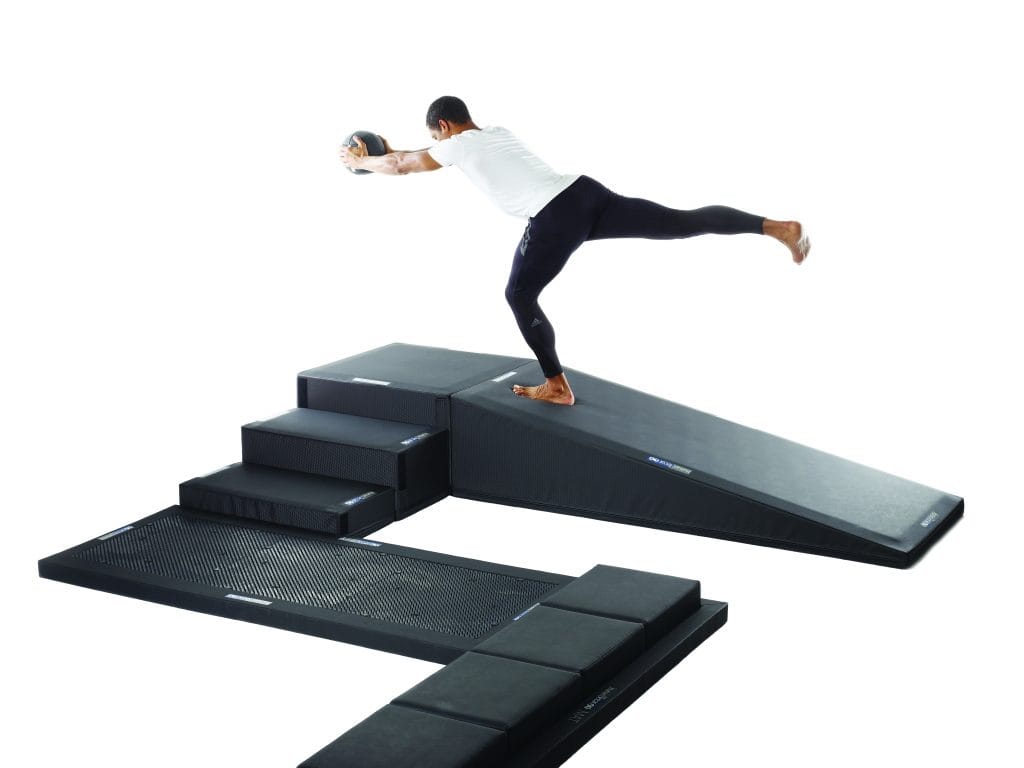In this blog we review the main findings in the article “Proprioceptive Training and Injury Prevention in a Professional Men’s Basketball Team: A Six‑Year Prospective Study” (2016), Riva et al.:

Introduction: Stabilizing the Unseen
Athletes, especially in dynamic sports like basketball, often sustain injuries when their bodies encounter forces beyond their ability to react — especially during single‑leg stance situations like landing or pivoting. Proprioception—the body’s unconscious ability to sense position and motion—can be a powerful defense. This study tracked a professional men’s basketball team over six years (2004–2010) to examine how refined proprioceptive training could reduce injuries to the ankles, knees, and lower back.
The Training Journey: Three Bienniums, Three Approaches
2004–2006 (Classic Balance Drills) Training relied on traditional unstable surfaces like rocking boards. Served as a baseline (control period).
2006–2008 (Quantifiable & Interactive) Introduced electronic proprioceptive stations (Delos system): a rocking board, postural sensor on the chest, interactive visual feedback, and automated data tracking. The goal: challenge athletes with high-frequency instability and clear, measurable feedback.
2008–2010 (High‑Density & Hyperfrequency) Training intensified: longer repetitions (30–60 seconds), shorter rest intervals (down from 15 to 5 seconds), and higher session density (> 85%). Visual tasks challenged athletes to hold specific angles of pronation/supination, speeding up reflexive control.
All 55 athletes fully complied throughout each phase—impressive for a long-term study.
Results: Stability Boosted, Injuries Plummeted
Proprioceptive & Postural Control
Static Stance (Eyes Closed): Proprioceptive control improved significantly—reaching a 72.2% gain in the final biennium versus baseline. Dynamic Stance: Entropy (a measure of postural disorder) dropped by about 55%, and instability reduced by over 80% in the third phase.
Injury Reduction (Very Real Impact)
Ankle Sprains: A monumental 81% overall reduction from the first to third biennium (risk ratio 0.19, p < 0.001). Knee Sprains: Decreased by 64.5%, though not statistically significant (possibly due to small sample numbers). Low Back Pain (LBP): Dropped by a striking 77.8% (p < 0.005).
Missed games and practices also declined—injury-related absences fell by about 72% overall, and LBP-related missed time dropped by nearly 90%.
Why It Worked: Mechanisms Behind the Magic
Two main mechanisms likely drove these outcomes:
Refined Proprioceptive Reflexes High-frequency instability training improved reflexive activation in stabilizing muscles—especially in the ankles—resulting in quicker reaction times to prevent sprains. Structural Resilience via Mechanical Loading Repetitive stimulation of ligaments and tendons may have induced biological adaptation—enhancing tissue resilience and durability under stress. Improved postural control also lightened loading on the lumbar spine, easing LBP occurrences.
Takeaways for Coaches, Therapists & Athletes
Measurable, tech-driven proprioceptive training works better than traditional balance drills. High-frequency, high-density protocols drive lasting improvements in stability and injury prevention. Whole-body benefits span beyond ankle injuries—impacting knee health and lower-back comfort too. Program design matters: It’s not merely footwear or stretching; it’s about how instability, feedback, and intensity are managed.
Final Thoughts
This six-year, real-world investigation of elite athletes demonstrates the transformative value of quantifiable proprioceptive training. By integrating interactive systems, focused tasks, and high-density routines, the team achieved unprecedented drops in injury rates and dramatic gains in control.
Whether you’re coaching an elite athlete or crafting rehab programs, this study underscores one truth: targeted, smart proprioceptive training isn’t just preventive—it’s transformative.

